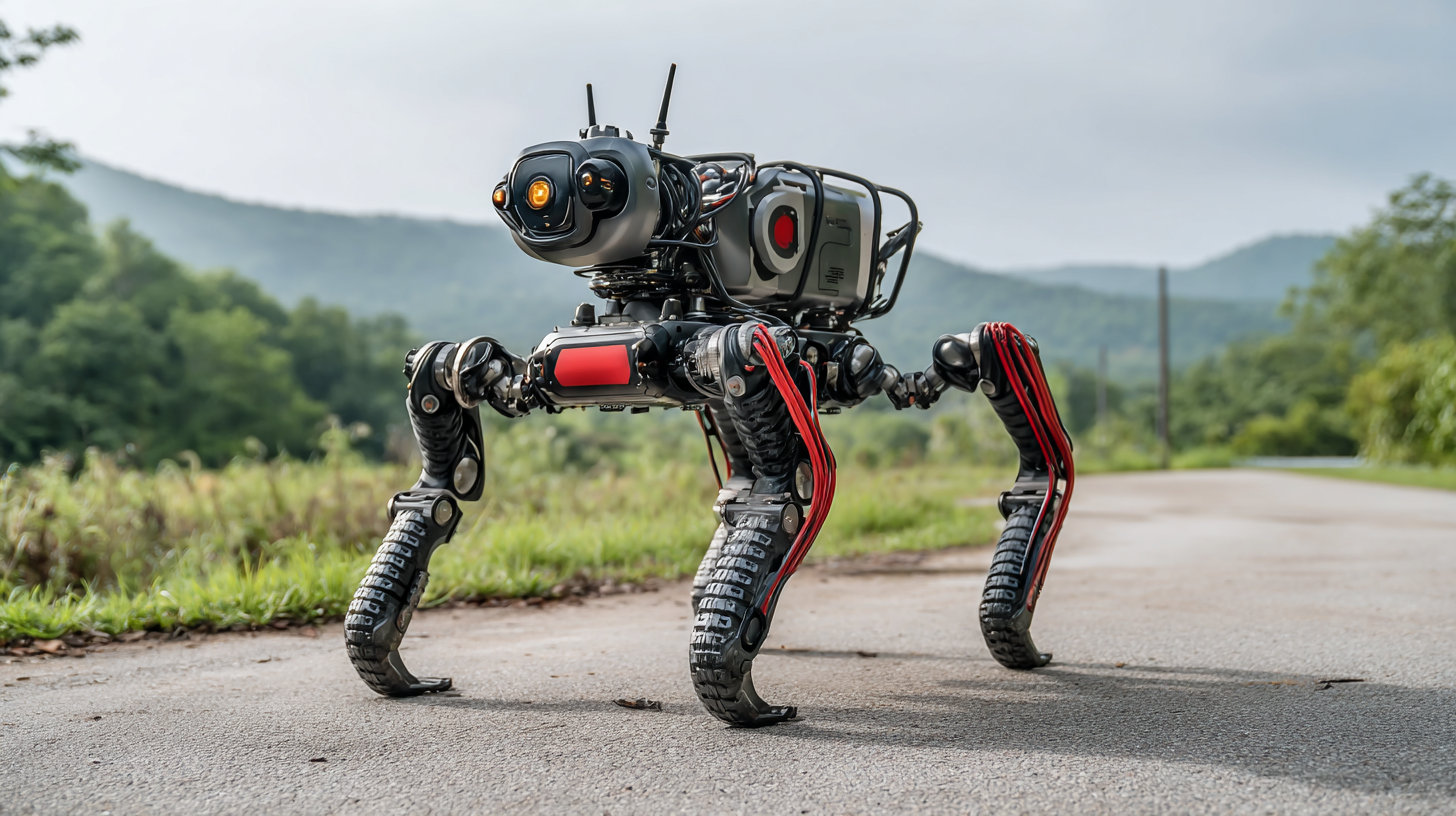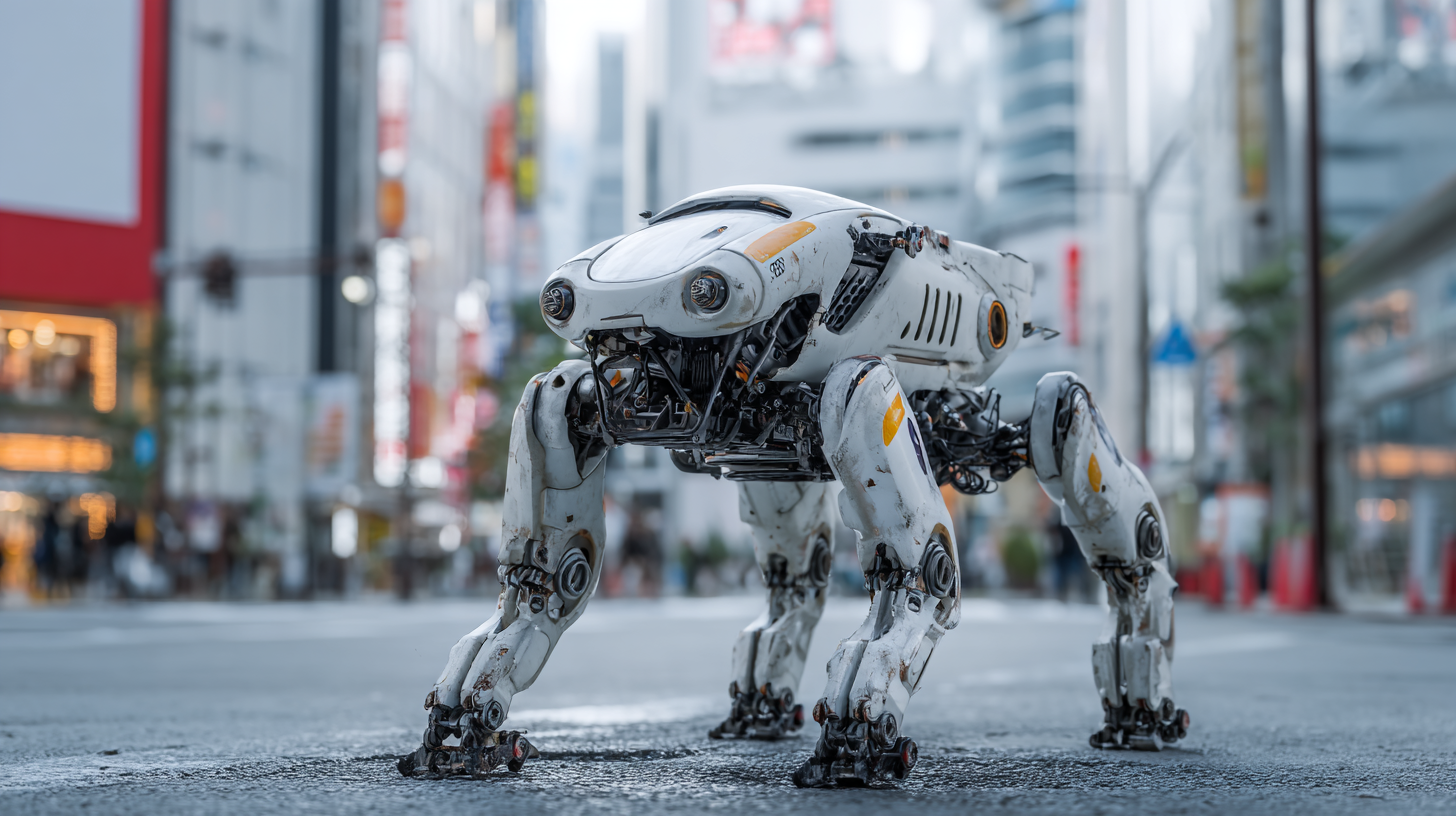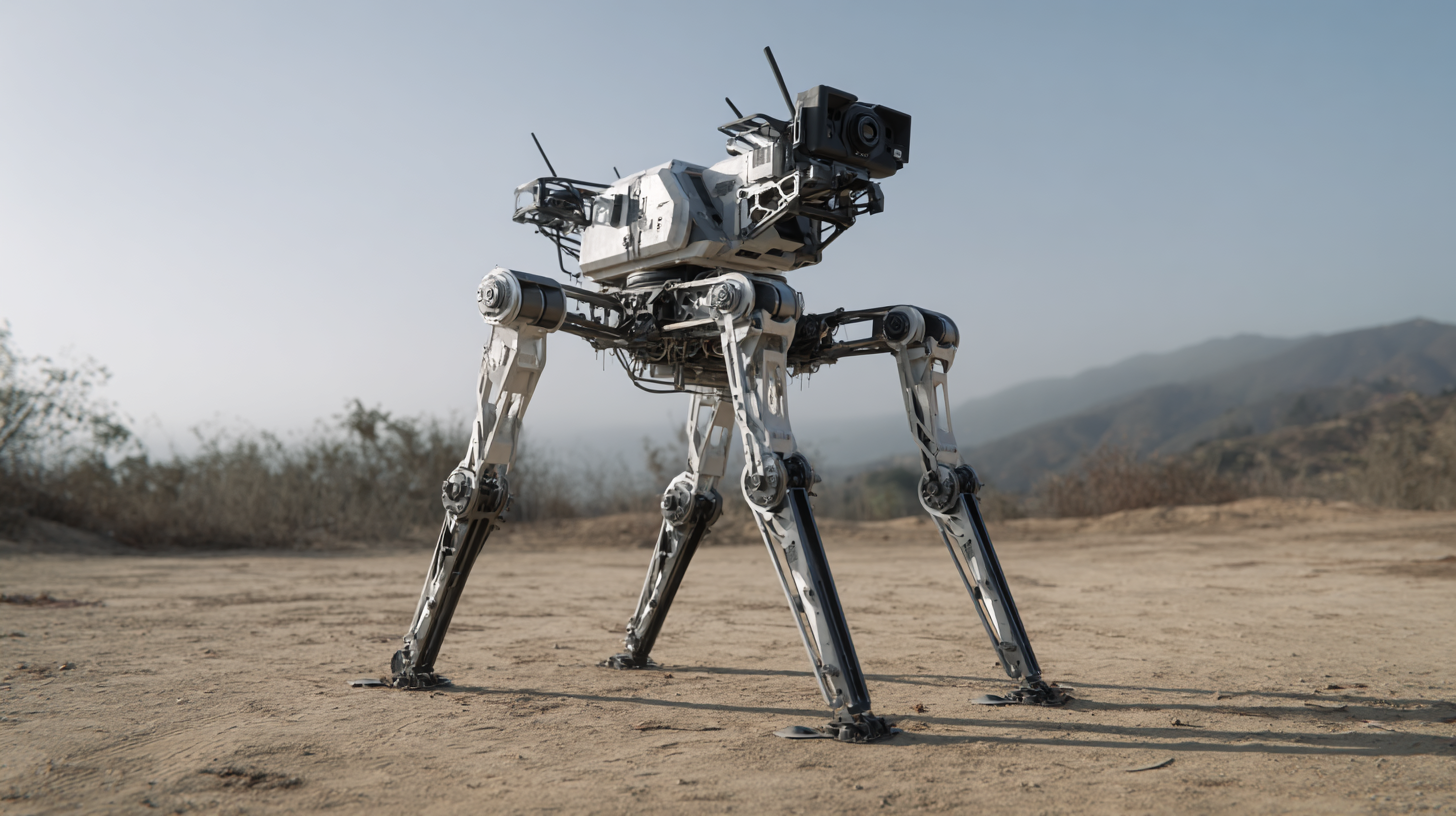In recent years, the emergence of advanced 4 legged walking robots has revolutionized various industries, showcasing their potential as powerful assets in diverse applications. From agriculture to search and rescue, these innovative machines are designed to navigate challenging terrains with remarkable agility and stability, mimicking the natural movements of quadrupeds. As China continues to position itself as a leader in quality manufacturing, the integration of 4 legged walking robots into industrial processes not only exemplifies the synergy of cutting-edge technology and robust engineering but also highlights the growing trend of automation in enhancing operational efficiency.

This blog will explore the exciting real-world applications of these versatile robots across multiple sectors, offering insights into how they are reshaping industries and paving the way for a more automated future.
In today's market, several innovative 4-legged walking robots are making significant strides across various industries. Notable models include Boston Dynamics' Spot, which excels in navigation and obstacle avoidance, proving invaluable in construction and inspection tasks. Similarly, Unitree's A1 offers a cost-effective solution with remarkable agility, making it suitable for research applications and security patrols. Another contender, ANYbotics' ANYmal, is designed for rugged terrains, allowing it to be utilized in environments like oil fields and nuclear plants, where human access may be limited.
Tip: When selecting a walking robot, consider its payload capacity and battery life based on your operational needs. This can significantly impact the robot's efficiency in completing tasks.
Moreover, the application of these robots often extends beyond their primary roles. For instance, their ability to carry equipment can enhance team safety in hazardous settings. As industries continue to evolve, integrating 4-legged walking robots can lead to increased productivity and innovative solutions to pressing challenges.
Tip: Keep an eye on software updates and compatibility for your walking robot, as advancements in AI and machine learning can improve performance dramatically over time.
| Robot Model | Payload Capacity (kg) | Battery Life (hours) | Max Speed (km/h) | Primary Applications |
|---|---|---|---|---|
| Model A | 30 | 4 | 5 | Security, Surveillance |
| Model B | 50 | 3.5 | 6 | Logistics, Delivery |
| Model C | 20 | 5 | 7 | Research, Exploration |
| Model D | 40 | 6 | 4.5 | Construction, Inspection |
Walking robots are making significant strides across various industries, showcasing their versatility and robustness in real-world applications. The key technical specifications of leading four-legged robotic models highlight their advanced engineering and design. For instance, models like the
Spot by Boston Dynamics feature adaptive legs that allow for exceptional maneuverability on uneven terrains, enabling them to operate in construction sites and disaster response scenarios.
 Equipped with advanced sensors and cameras, these robots can autonomously navigate complex environments while capturing critical data.
Equipped with advanced sensors and cameras, these robots can autonomously navigate complex environments while capturing critical data.
Another noteworthy model is the
Laikago from the Chinese company Unitree Robotics, known for its lightweight design and speed. With a maximum payload of around 5 kilograms, it's fully capable of carrying various tools and equipment to assist with tasks in agriculture and surveillance. The technical innovations such as
real-time obstacle detection and machine learning algorithms enhance its efficacy in performing intricate operations independently. Moreover, features like remote control operation and the ability to traverse diverse landscapes make these robots invaluable assets in logistics and security sectors, paving the way for a future where robotics seamlessly integrates into daily operations.
In recent years, legged robots have emerged as innovative solutions across various industries, showcasing their unique abilities to navigate difficult terrains. One prominent example can be seen in agriculture, where legged robots are used for tasks such as planting and harvesting. These robots can traverse uneven fields more effectively than conventional wheeled vehicles, allowing for greater efficiency and reduced damage to crops.
 In the search and rescue sector, legged robots play a crucial role in disaster response. Equipped with advanced sensors and cameras, they can navigate through debris and reach areas inaccessible to human responders. For instance, during post-earthquake recovery, these robots can locate trapped survivors, significantly enhancing the chances of successful rescues.
In the search and rescue sector, legged robots play a crucial role in disaster response. Equipped with advanced sensors and cameras, they can navigate through debris and reach areas inaccessible to human responders. For instance, during post-earthquake recovery, these robots can locate trapped survivors, significantly enhancing the chances of successful rescues.
Tip: When considering the implementation of legged robots in any industry, it’s essential to assess the specific challenges that the environment poses. Understanding the capabilities and limitations of these robots can help tailor solutions to fit operational needs effectively.
Moreover, investing in continuous training and maintenance is key to optimizing their performance. Regular updates to software and hardware ensure that these robots remain reliable and innovative tools in complex scenarios.
Implementing four-legged walking robots in your business can revolutionize operations across various sectors. The first step is to assess the specific needs of your industry. For instance, in logistics, these robots can navigate uneven terrain to deliver goods, while in agriculture, they can monitor crops or assist with planting. Understanding the unique challenges your business faces will help you determine how a walking robot can provide a solution, ultimately improving efficiency and reducing operational costs.
Next, it’s crucial to select the right technology that aligns with your identified needs. Research various models available in the market, focusing on features such as payload capacity, terrain adaptability, and battery life. Consider conducting pilot tests with a few models to understand their performance in real-world scenarios before making a significant investment. Additionally, training your staff on how to interact with and maintain these robots will be essential for seamless integration into daily operations, ensuring you maximize the return on your investment and enhance productivity.
The landscape of four-legged robots is rapidly evolving, with advancements in robotics technology redefining their applications across various sectors. According to a report by Market Research Future, the global robotics market is anticipated to reach $210 billion by 2025, with a notable segment dedicated to legged robots. These machines, equipped with advanced sensors and AI-driven algorithms, are becoming increasingly vital in logistics, agriculture, and search-and-rescue operations. For instance, Boston Dynamics' Spot robot demonstrates remarkable capabilities in navigating challenging terrains, making it a valuable asset for inspection and maintenance tasks in industrial environments.
Future trends indicate that the integration of Machine Learning and enhanced mobility will further propel the functionalities of four-legged robots. A study from the International Federation of Robotics highlights that the demand for agile robots in construction and hazardous zones is set to increase, with a projected annual growth rate of 15% over the next decade. This growth reflects the industry's shift towards automating labor-intensive tasks, allowing for improved safety and efficiency. As robotics technology continues to advance, we can expect four-legged robots to play a pivotal role in transforming various industries, addressing complex challenges while enhancing productivity.
This chart illustrates the distribution of four-legged walking robots across various industries, showcasing the advancements and future trends in robotics technology.
